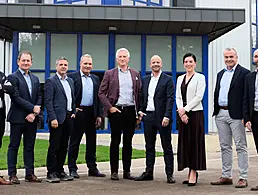Iona Technologies may have had its problems lately but the beauty of the business it is in – systems integration software – is that, far from receding, the need is perhaps greater than ever. The man charged with plotting Iona’s technology roadmap is chief scientist and co-founder Sean Baker (pictured).
If the intricacies of software are enough to make the average punter’s eyes glaze over, middleware – the stuff that knits diverse software systems together – has even greater potential to reduce most people to a somnolent stupor. It is to Baker’s credit that he can convincingly argue that middleware is as exciting and dynamic as software gets.
Sure enough, the whole area of middleware is changing fast. First the term web services came along to underscore the role of middleware in delivering particular business processes via the internet. Now service oriented architecture (SOA) has become the mantra of companies such as Iona that are looking to change the way organisations build and manage their IT systems.
“If you don’t yet know about service oriented architecture and how it will change your enterprise’s IT architecture, you are placing yourself at a competitive disadvantage. Companies must consider now how to incrementally re-use, encapsulate, and open applications to reach greater corporate agility.”
Not Baker’s words but those of Massimo Pezzini, a Gartner analyst, one of a number of industry commentators who are convinced that SOA is more than just another three letter acronym.
Simply put, SOA is way of re-engineering software systems which removes a lot of the complexity or at least makes that complexity more manageable. Almost a year ago, Iona dived into that emerging market with Artix.
“SOA is something that overarches or integrates different middleware islands,” Baker explains. “In our view, the vast majority or organisations need something that can cater for the heterogeneity of their systems – hence Artix.”
He continues: “Up until now, there’s been a notion that you can build one type of middleware into all applications and that in itself would allow all applications to communicate. That’s just not where the IT industry is today. If you look inside any medium and large enterprise they are using multiple middleware. So you need middleware to integrate middleware – tie it all together – and that’s the space Iona is moving into with Artix.”
But ‘middleware for middleware’ is not only the only thing Artix has to offer. Iona also sees a role for Artix where it can complement an SOA built using technologies from, say, an IBM or a BEA Systems.
“The role of Artix [in that case] is to augment these platforms so they can embrace all the other technologies the organisation is bound to be using. We’re putting much more emphasis on [this] aspect in our future strategy,” notes Baker.
As it pushes the Artix message, Iona at the same time has a large installed base of users for Corba-based Orbix, its established middleware offering and cash-cow. Will Iona be looking to migrate Orbix users over to Artix in the long term?
“I would say not,” says Baker. “Orbix is a very, very successful product. We are very committed to it and looking at ways of expanding that market. Orbix is for those who see the advantages of Corba, and they are manifold. Artix is a different game altogether; it’s about integrating different middleware islands. In any case, the Orbix market is nicely mature. A lot of the systems have been developed so that the people are running their companies on them. They are not going to want to take down those systems and put in a new middleware switch. Another way of looking at it is that Corba is to a large degree about building systems while Artix is about integrating them.”
What Baker is arguing, therefore, that the middleware you choose to deploy depends on what you want it to achieve. “There can be no single middleware standard – middleware is too big a space for there to be one middleware that embraces all of the good ideas. That middleware would be so big it couldn’t be implemented efficiently. There will be multiple middleware for different jobs.”
Highlighting the virtues of Corba, he adds: “Corba gives middleware programmers lots of choice. This is important because when they are building a high-end system, they want to mould the middleware to match the architecture of the system they are building and Corba gives them that flexibility. Analysts may talk a lot about Java, J2EE and .Net, and that’s fine, but Corba still has a large section of the market that it is better at tackling.”
So far, Iona’s two-pronged strategy – keeping its Orbix users happy while spreading the Artix gospel – has been slow to translate into actual revenues. Almost a year after launch the sales of Artix have been disappointing, the company admits. For investors, this might be a sign that the company is on the wrong track and that Artix is doomed to failure.
Baker, a respected industry figure who has witnessed the ebb and flow of the middleware industry in the 13 years since Iona was founded, feels he knows better. For Iona’s chief scientist, it is question of when, not if. “Technology takes a long time to adopt. There’s no such thing as an overnight success and it takes time to mature a product and to grow its space.”
By Brian Skelly




